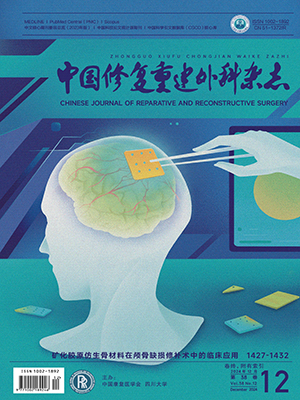The femoral veins were excised from 28 dogs and distended with pressure of 40, 80 and 120 kPa, respectively before grafted to femoral arteries. The veins were harvested at different times and Pollak sections were prepared which revealed different stains of elastin, collagen and smooth muscle in each section. The sections were led to image analysis system to computerize the relative contents of theabove components. The results were as follows: Elastin decreased significantly at 4 weeks (P lt;0.01), and was constant between 4 and 16 weeks. No statistical difference was found in 40, 80 kPa and the control group (P gt;0.05), but the elastin of 120 kPa group by the 16th week was still decreasing. Collagen of each group had no difference, but C/E increased significantly with time. Smooth muscle contents were correlated positively with time, and negatively with the pressure at 1 week, then positively with the pressure at 16th week. The changes of the above trends were the same as development of intimal hyperplasia. The contentions were the value of C/E was determined by the arterial pressure but that of 120 kPa pressure was more higher. The preimplant pressure distension was a possible significantfactor leading to excessive intimal hyperplasia of early and middle stage of autogenous vein grafts.
Citation: Qian Jixian,Wang Jun,Huang Yaotian,et al.. QUANTITATIVE ANALYSIS OF LIQUID DISTENSION EFFECTS ON MICROSTRUCTURAL COMPONENTS OF GRAFTED VEINS. Chinese Journal of Reparative and Reconstructive Surgery, 1995, 9(2): 72-75. doi: Copy
Copyright © the editorial department of Chinese Journal of Reparative and Reconstructive Surgery of West China Medical Publisher. All rights reserved




